

Class COLLEMBOLA Lubbock, 1870
Springtails, general.
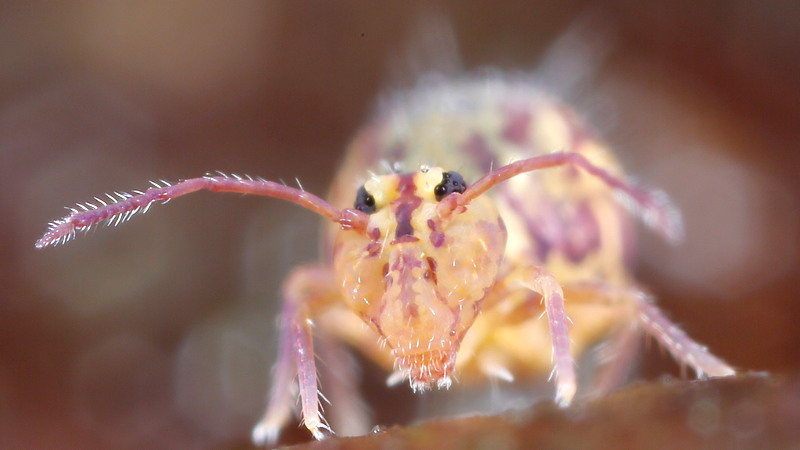
Dicyrtomina ornata
Many different kinds of springtails occur in the Netherlands. For the classification I focus on a list kept by the EIS springtail work group.
EIS = European Invertebrate Survey. This group list the invertebrates in the Netherlands and makes the occurrence of the species commonly known.

Dicyrtomina saundersi
Springtails (Collembola) are similar to insects but are considered as a separate primitive group. These generally very small creatures, often some millimetres or even less, sometimes occur en mass in the garden. That was also the case with the depicted Dicyrtomina saundersi which together with Dicyrtomina ornata and Dicyrtoma fusca were suddenly in large numbers in early December 2009 on the water of the rain barrels. I assume they are blown off the trees and after some searching I found them still on the trees. Springtails live under stones, and under bark, in moss and actually in all humid areas, where they live on organic matter and fungi.
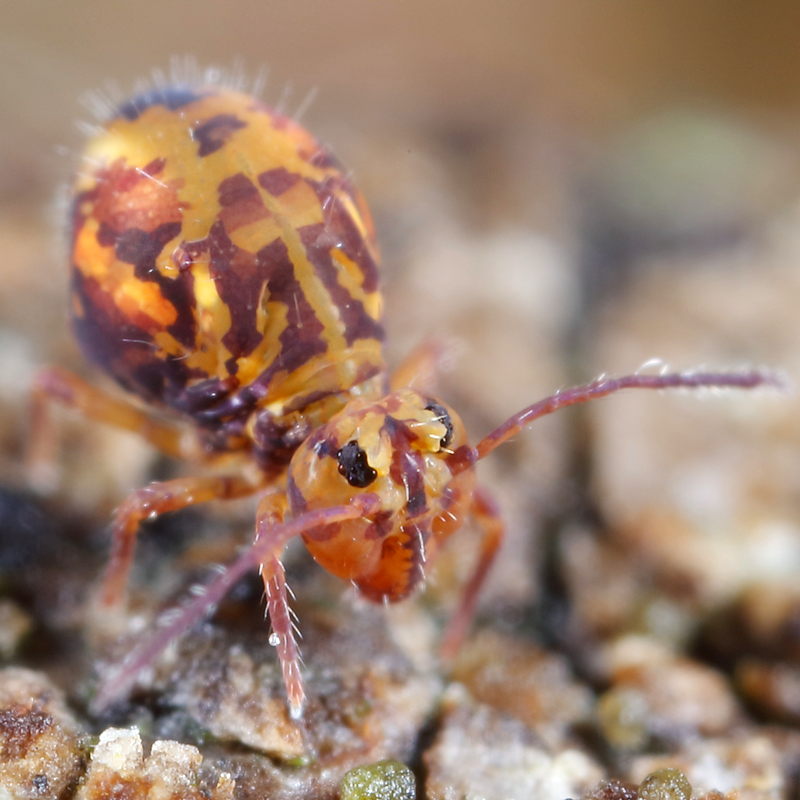
Dicyrtomina ornata
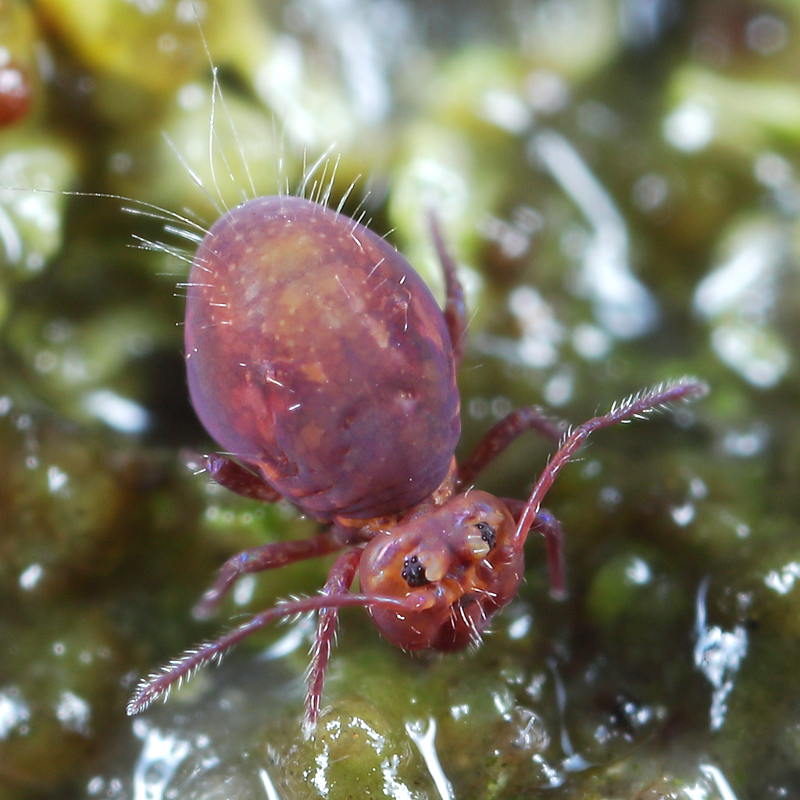
Dicyrtoma fusca
There are Springtails in many sizes. There are small ones little more than 0.1 mm, and large ones, the largest species is 17 mm.
The smallest species that I've put on the picture is about 0.25 mm wide, the largest about 4 mm.
Every now and then you're in luck, as in the photo below.
All of a sudden there are two species of springtails in front of my lens, both adult but very
different in size. A big Dicyrtoma fusca
and a small Sminthurinus aureus.
Then comes the problem of depth of field.
You have only a few tenths of a mm that comes sharp on the picture.
So you have to turn it so that of both animals the heads are good on, that's what here is successful.
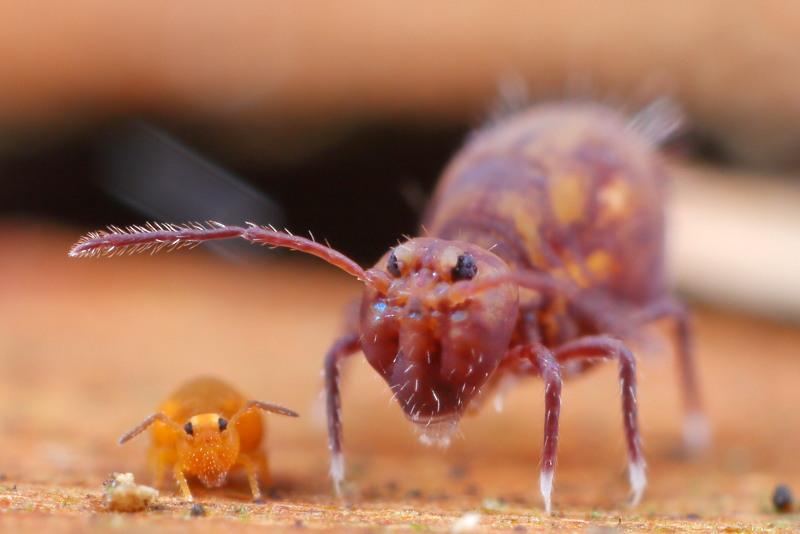
Dicyrtoma and Sminthurinus
Like all arthropods the springtails have an external skeleton or exoskeleton. This serves for protection and strength. The disadvantage of such a exoskeleton is that it does not grow. If the animal gets bigger it must molt, under the old skin a new one is created and the old is partially demolished. Then comes a difficult and vulnerable period, the animal must crawl out of the old skin. The new skin is still soft and by taking in air or moisture the animal can suddenly be a lot bigger. The newly gained space can then again be grown full before another molt has to take place. Are the animals once adult than mostly shedding stops, the animals don't grow bigger. However, there are also arthropods including the springtails that throughout their lives continue to grow and molt. On the four photos below you can see the molting to occur, the old skin remains behind the animal.
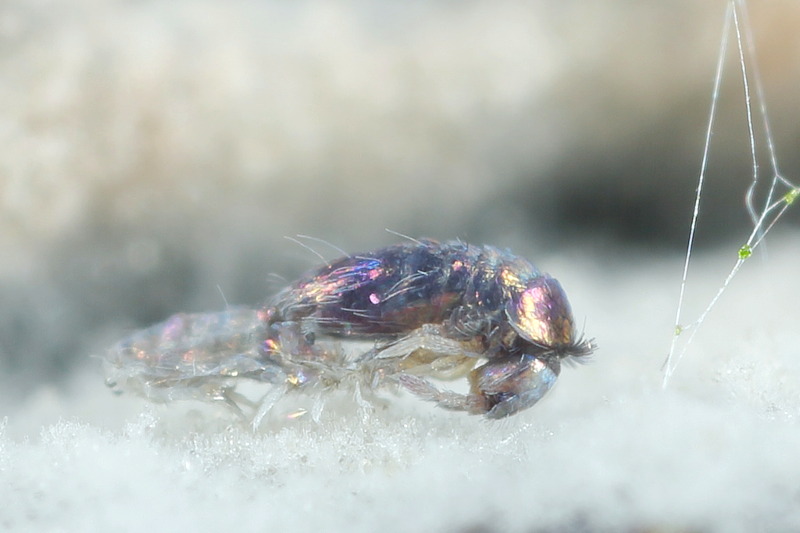
Lepidocyrtus violaceus, molting

Lepidocyrtus violaceus, molting
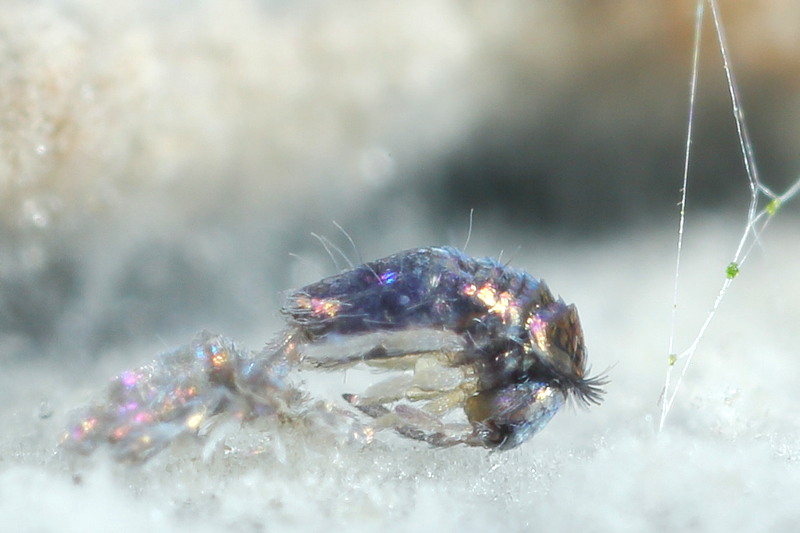
Lepidocyrtus violaceus, molting
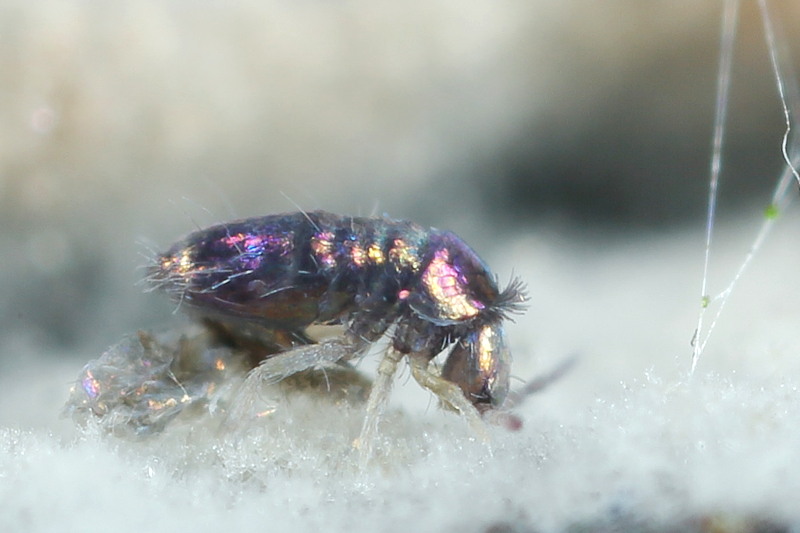
Lepidocyrtus violaceus, molting
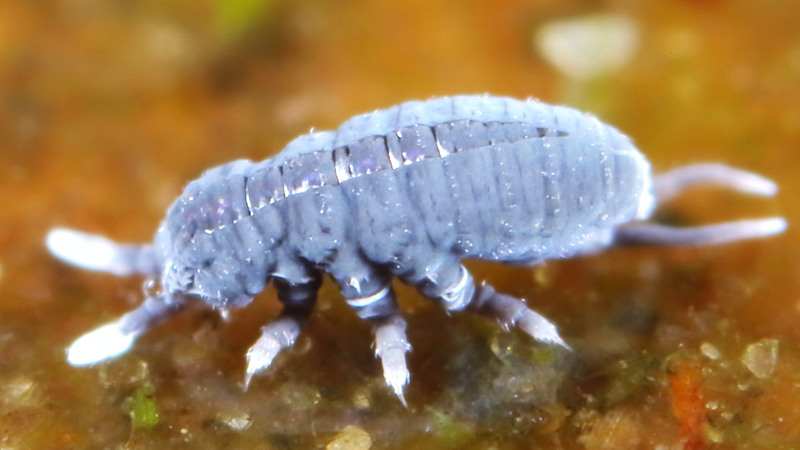
Podura aquatica, start of the molting
The skin of the springtails is extremely water-repellent, hydrophobic. A lot of research is being done because people want to know the reason for it. Perhaps the principle can be used in all sorts of applications for people, such as really water-repellent clothing. You can see it very clearly if there are small water drops on the body of the animals. These drops do not spread, but form a perfectly round ball on the skin.
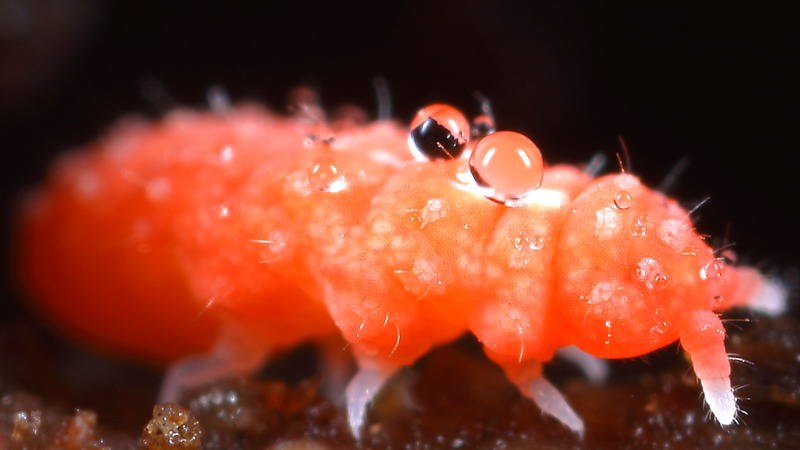
Bilobella braunerae with water drops
Many species of springtails have scales on the body like butterflies. This scales easy let loose and if there are many scales lost, you see sometimes yellow colored animals that normally are gray or black, because you see the naked skin.
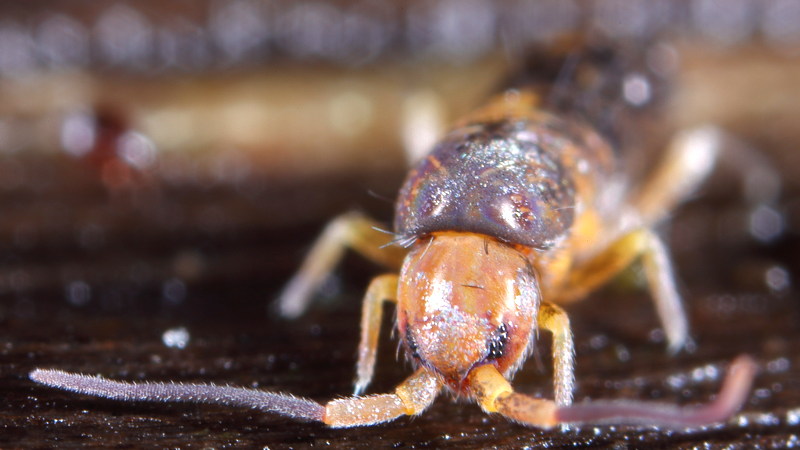
Tomocerus spec. many scales lost
Sometimes you may experience interference colours so you see different colors, when you look at it on a different angle. This also occurs with Tomocerus vulgaris that thereby gets in the Sun its characteristic gold shiny rings on the back of the body segments.
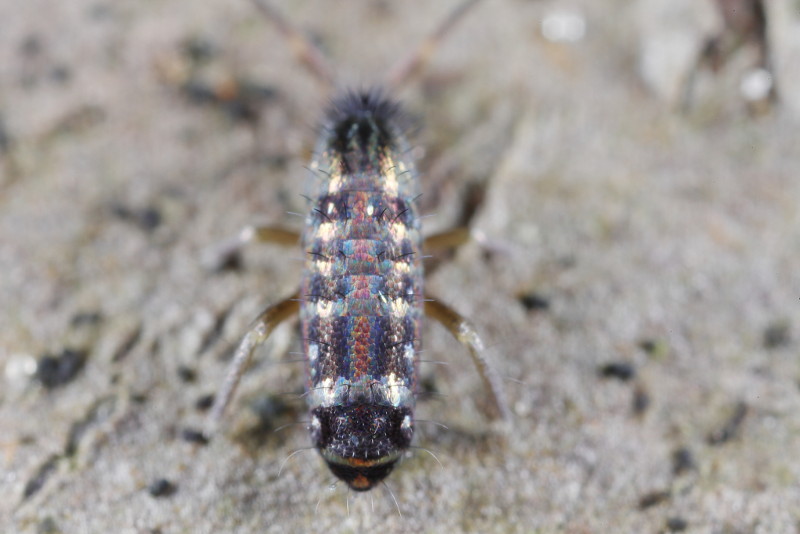
Tomocerus vulgaris, scales
Springtails have separate sexes, there are female and male.
The sperm transfer is indirect, the spermatophore is placed on the surface or directly on the female genital opening,
depending on the species of springtail.
Sometimes you are lucky and you see when viewing a picture something that you have not observed when the photo
was created. So there is on the picture of this springtail a spermatophore in addition to the middle right leg.
The stalk that looks like a glass end with a bright ball at the top.
For clarity, I have made the rest of the picture slightly darker and the spermatophore is in a lighter rectangle.
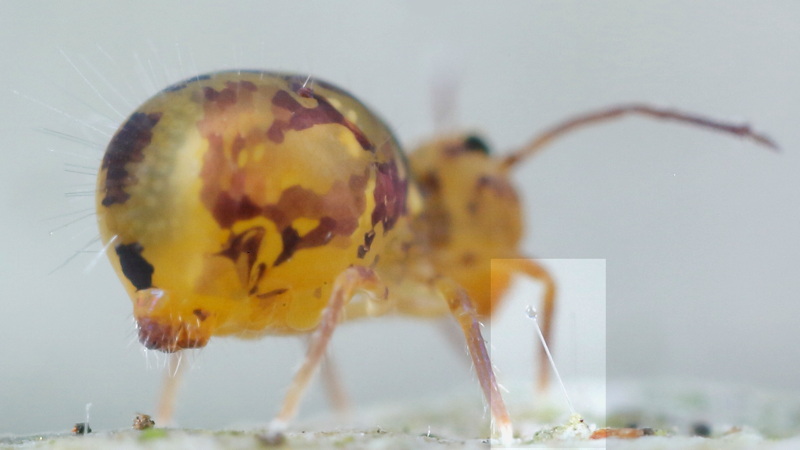
Dicyrtomina ornata with spermatophore

spermatophore
A very exceptional observation I am doing on 11-11-2014. By turning on fallen oak leaves, I see many species of very small springtails. Among others Sphaeridia pumilis, a springtail whose females are up to 0.5 mm males up to 0.25 mm long. Two individual of this species sit together. So I make some pictures and have recorded a unique event. This springtail species is one of the few in which there is direct sperm transfer between the sexes. Normally they keep each other fixed by the antennas, here is the male to see so firmly fixed behind under the female.
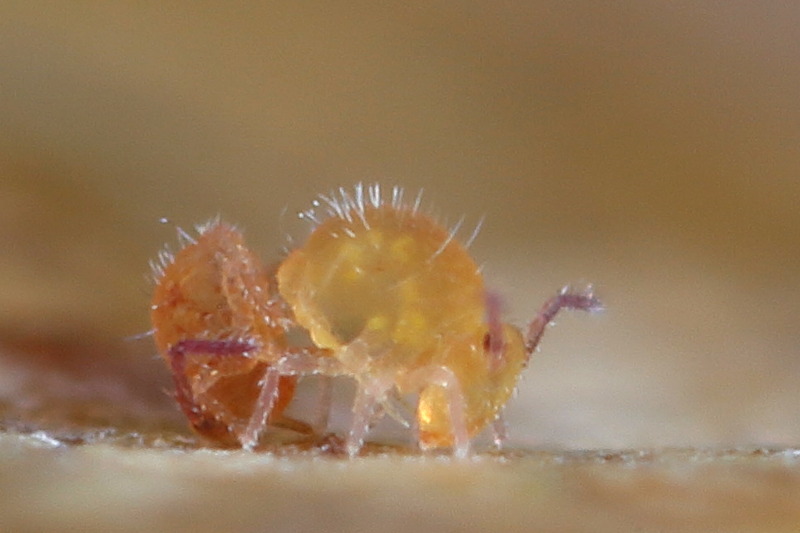
Sphaeridia pumilis, mating

Sphaeridia pumilis, mating
When taking photographs, sometimes things stand out that are strange. In the Deuterosminthurus bicinctus a kind
of dance takes place between the male and female in preparation for sperm transfer. While photographing, I notice that there is
something on the male's antenna that the female is eating. After some searching it appears that the man has deposited a spermatophore
which he had stretched out and glued to his antenna before the protein stem had hardened. He holds it out to the female,
who will eat it. In this way, he manoeuvres the female over the spermatophore, which the female can then pick up.
For a description, see the article by: Janssens, F. & Huskens, M.L. 2017. "Note on the courtship ritual of
Deuterosminthurus pallipes (Bourletiellidae)" on the website: collembola.org

glued
Springtails lay eggs, you often see these eggs in clusters together. Typical in Collembola eggs is that the chorion (eggshell) burst at the equator and contracts to the poles, it forms a polar cap. Eventually the caps will 'fall off'. (info: Frans Janssens). It's plain to see at the eggs on the strongly magnified picture. Underneath a picture of eggs that almost hatch. You can see claerly the eyelets and antennas. These could be eggs of the same species. Below is a combined picture of eggs and a springtail which I assume has laid a share of these eggs. Both in the same magnification, so you can see how big the eggs are.

eggs of Collembola
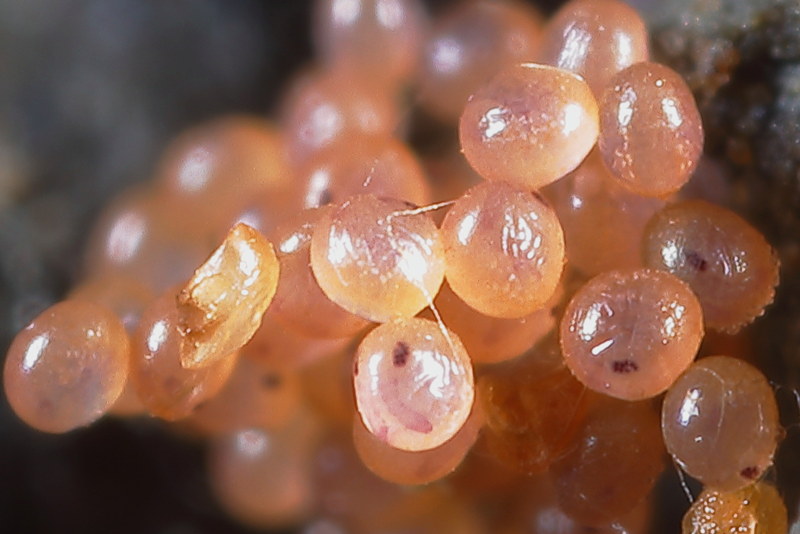
eggs of Collembola

mature Collembola and eggs
Below you see two pictures of a duckweed leaf containing the eggs of Sminthurides aquaticus or S. penicillifer. These springtails eats holes in the duckweed and lays an egg in there. On the upper picture to the left you see a yellow fresh egg in addition a brown egg, brown by faeces with which it is covered, then the hole that remains behind as the egg is hatched. On the second picture the embryos can be seen by the egg shell.
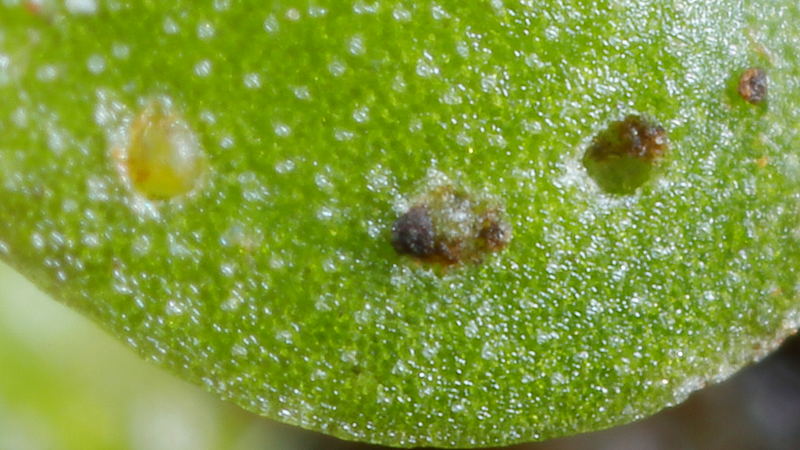
eggs from Sminthurides in Duckweed
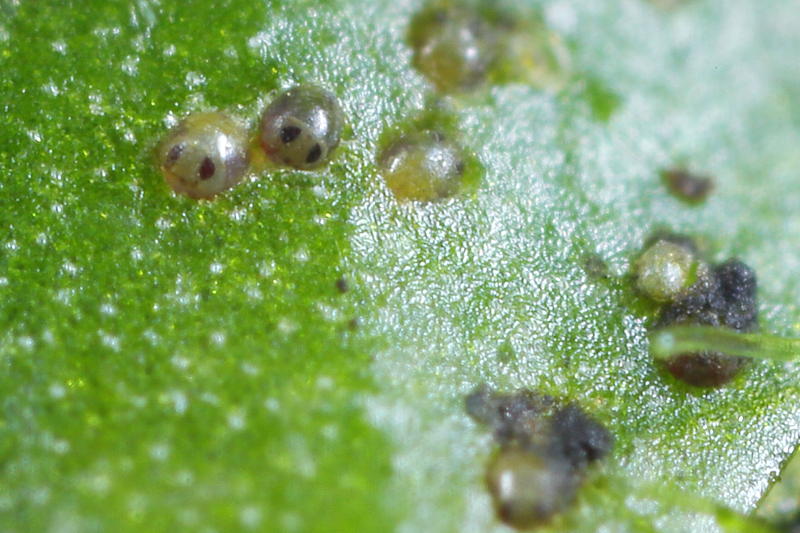
eggs from Sminthurides in Duckweed
The springtails are an important food source for other small animals. They are applied in the terrarium hobby as food for small frogs and you can even buy them commercially, special bred as frog food. Regularly you see that a springtail has become a victim of another animal like: spiders, mites, pseudoscorpions and a fly.
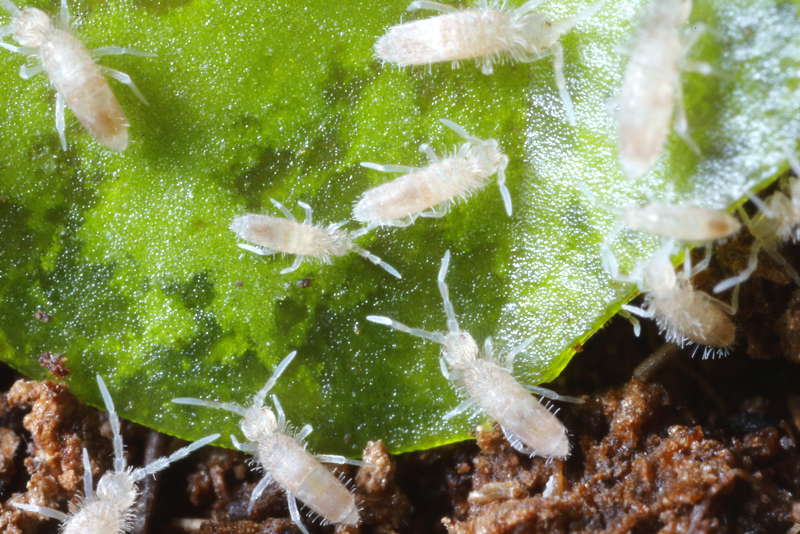
Sinella curviseta for sale as food
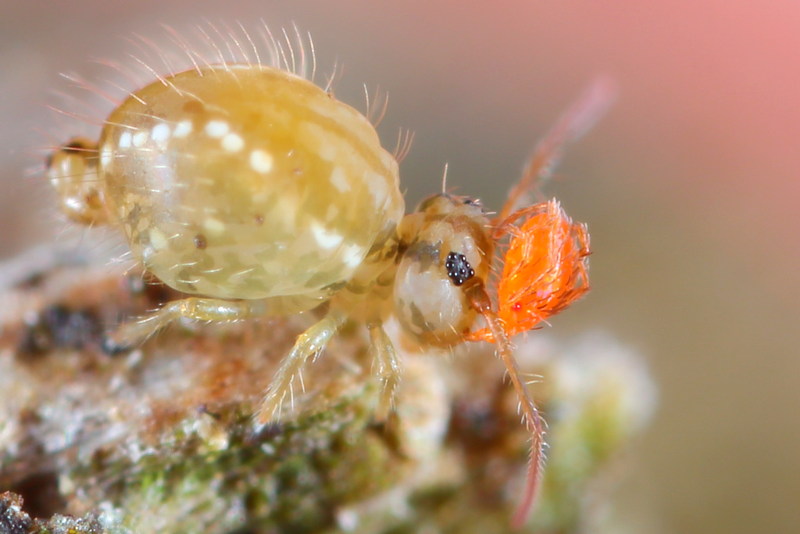
Ascari mite parasitizes a springtail
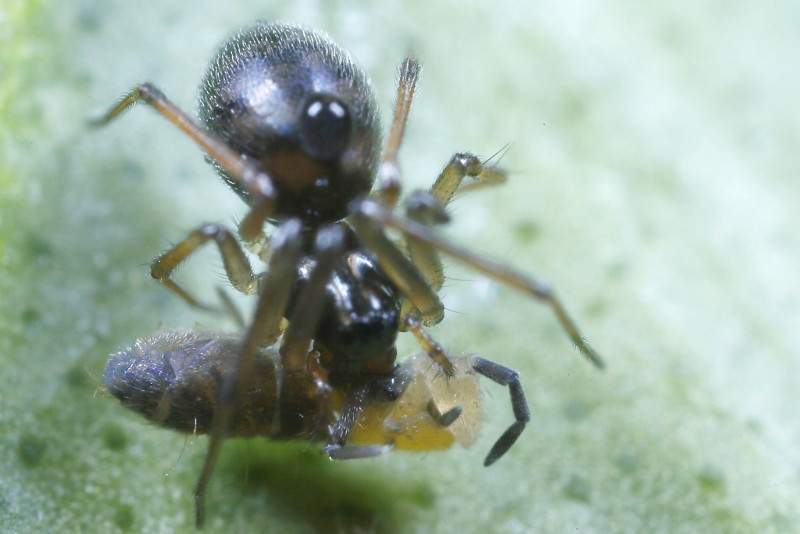
money spider eats springtail

Arctosa perita eats Entomobrya multifasciata

Ozyptila praticola eats Tomocerus vulgaris

spider mite eats Dicyrtomina ornata

pseudoschorpion eats Isotoma anglicana
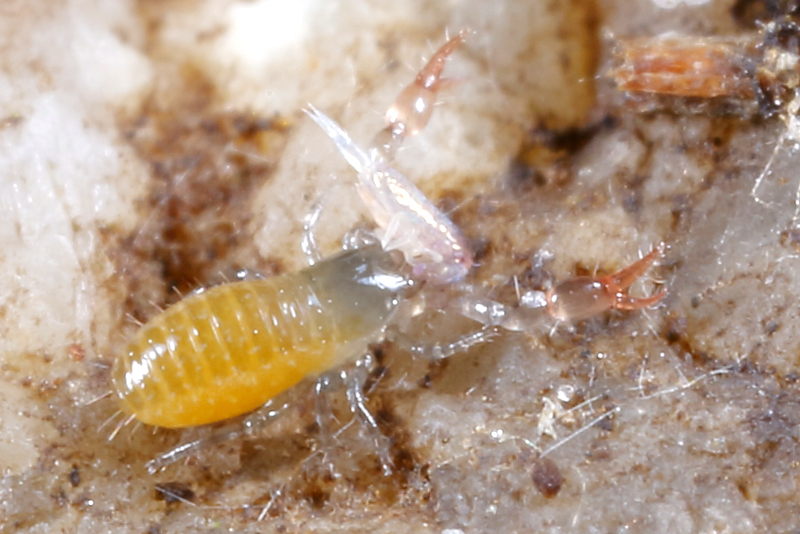
Neobisium sp. eats Lepidocyrtus

Aphidoletes larva eats Isotoma viridis
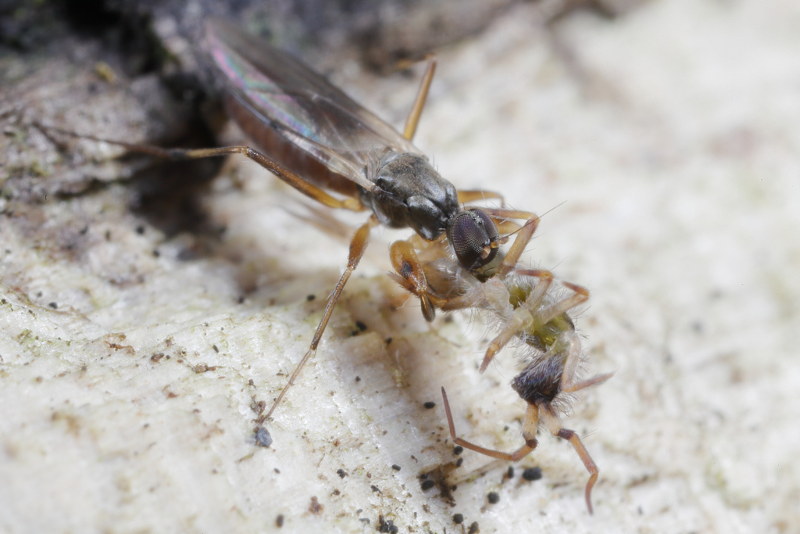
Tachypeza nubila eats Orchesella flavescens
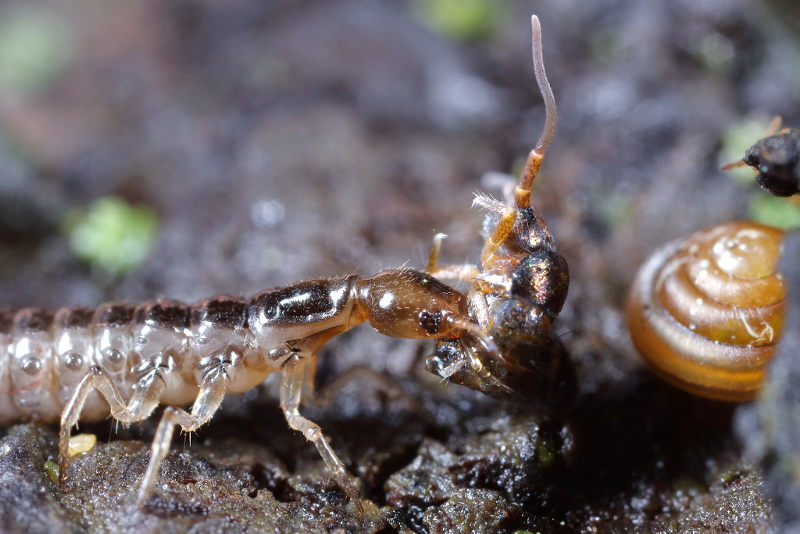
beetle larva eats Tomocerus spec.
You see very rarely that a springtail serves as means of transport. Probably the mites just hitchhike and does further not bother the springtail. In the picture there are a very large number of mites on a Allacma fusca. On the other photo, except for a moment a springtail, multiple nematode worms lifts, also probably only hitchhikers.
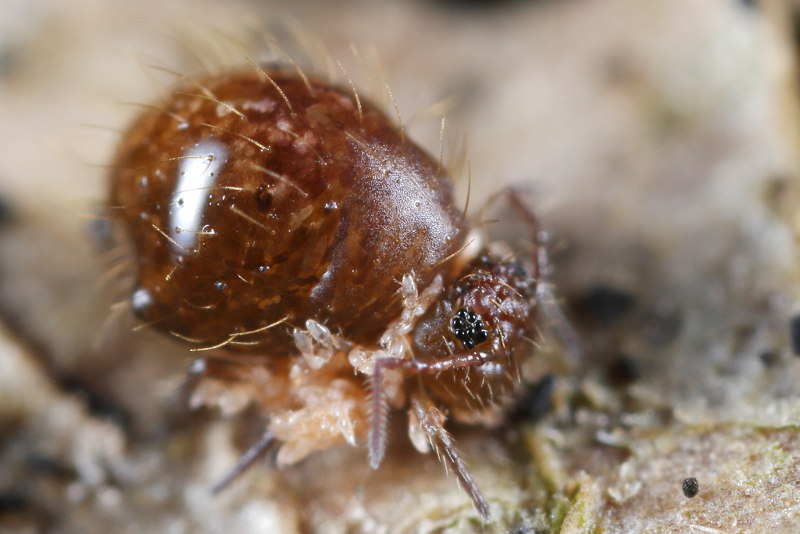
Allacma fusca with mites as hitchhikers

Dicyrtomina ornata with nematods as hitchhikers
The picture of the underside shows clearly the furca, the jumping tail where the whole group
was named to. With this jumping tail the animals can make small unfocused jumps, to escape in an emergency.
Apart from the spring tail is also clearly visible the bulge (retinaculum) which will put down the furca.
Between the furca on the front side is a visible bulge, the collophore, a body that can absorb and excrete water
and serves the osmoregulation. After jumping two vesicles protrude on the side of the collofoor (see yellow arrows
on the other photo) they make a kind of stabilization, leaves the animal sticking to the substrate and it can easily
stand up.
This vesicle has multiple functions, the water is also absorbed. Usually the animal
drinks of the water film on the surface where it sits on. Here is a unique photo according to Frans Janssens,
the first that shows that the animal can drink the dew drops on its body.

Dicyrtomina ornata underside
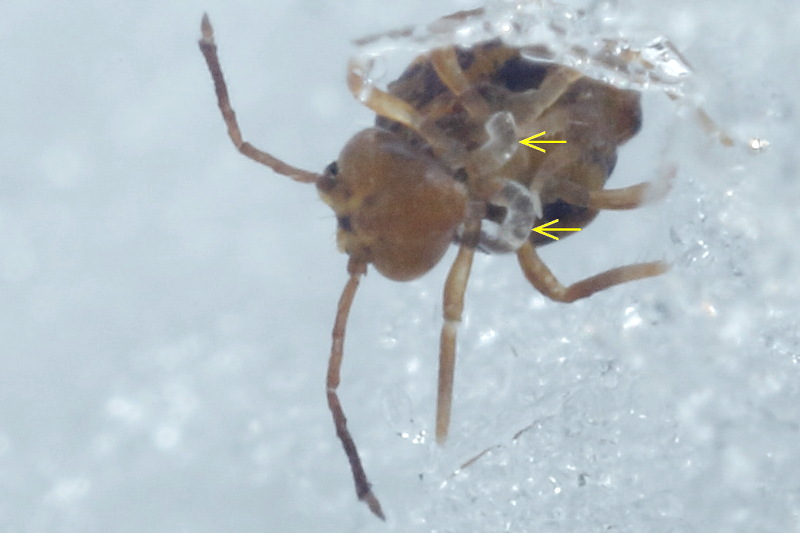
Dicyrtomina ornata underside
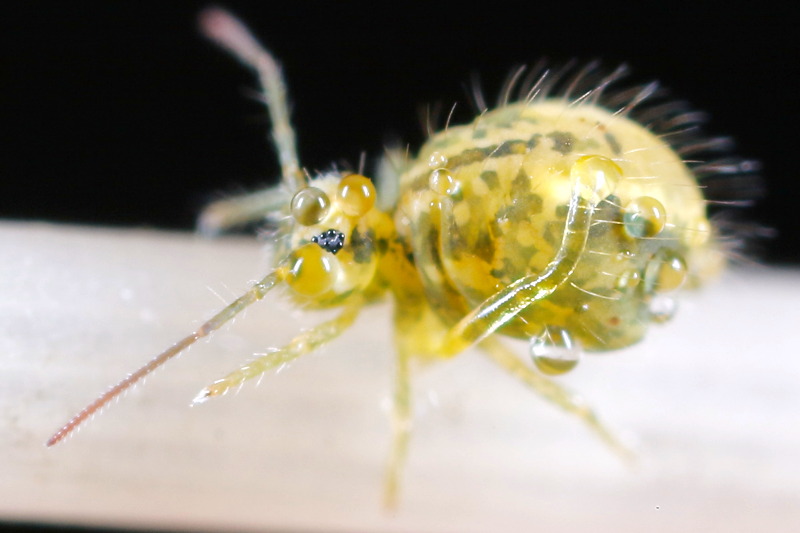
Sminthurus viridis
It is not often that you find sick or dead springtails. That is why I am very surprised when I suddenly find various dead Dicyrtoma fusca in a nature reserve near my home at the end of 2012. The animals are very very swollen, sometimes with a large sphere behind the head. If you come back a day later, there is still only a skin and the head as recognizable part. In some specimens, it appears that a fungus is growing on the skin. Later I find near Hoenderloo also such a swollen springtail, so it is not typical for Drenthe. The phenomenon also appears to occur in England although it is here clearly another fungus. A Web publication can be found on the website www.collembola.org by Frans Janssens: Note on a case of lethal pathology in Dicyrtoma fusca (Collembola: Dicyrtomidae) from Holland

Dicyrtoma fusca dead

Dicyrtoma fusca dead

Dicyrtoma fusca dead
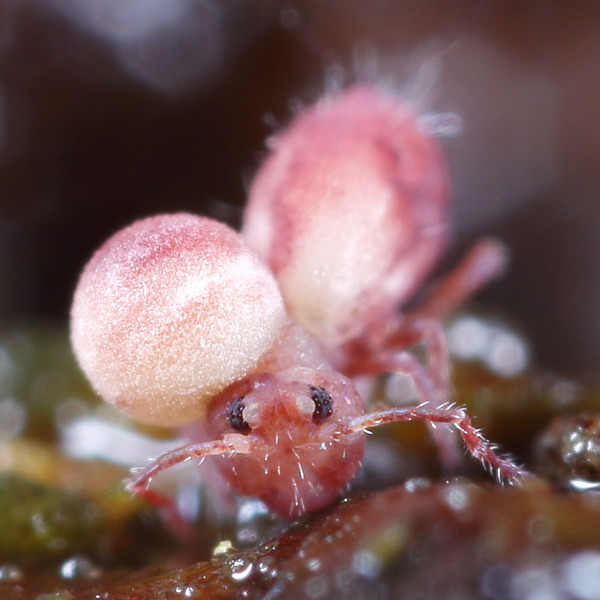
Dicyrtoma fusca dead

Dicyrtomina saundersi dead 05-02-2014
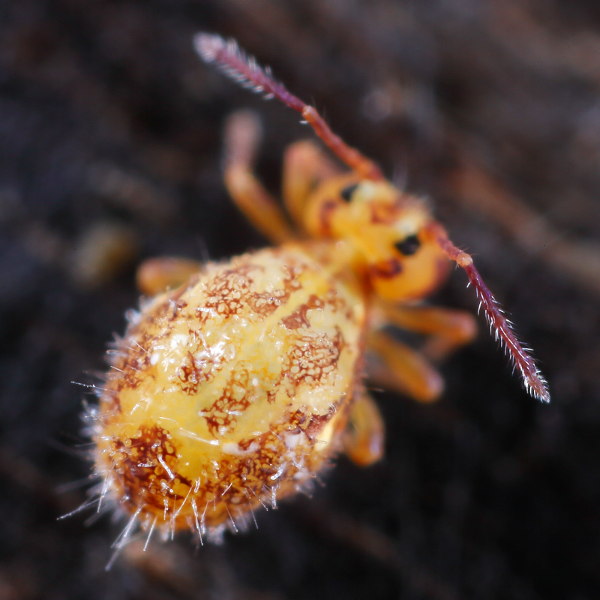
Dicyrtomina saundersi dead 05-02-2014
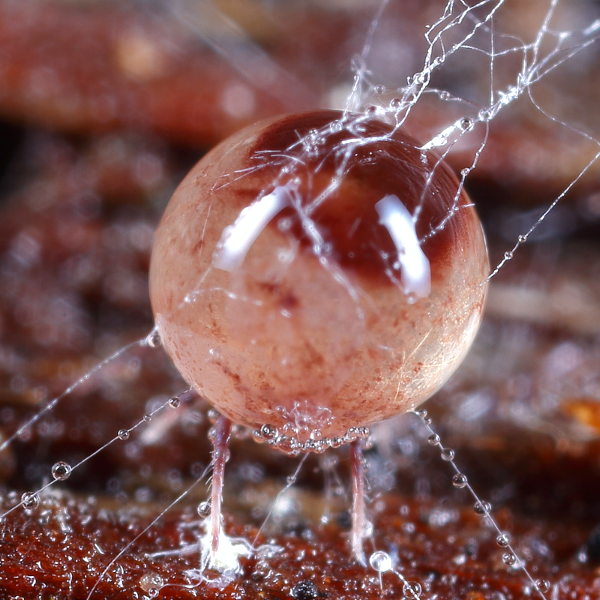
Dicyrtoma fusca dead 18-02-2014
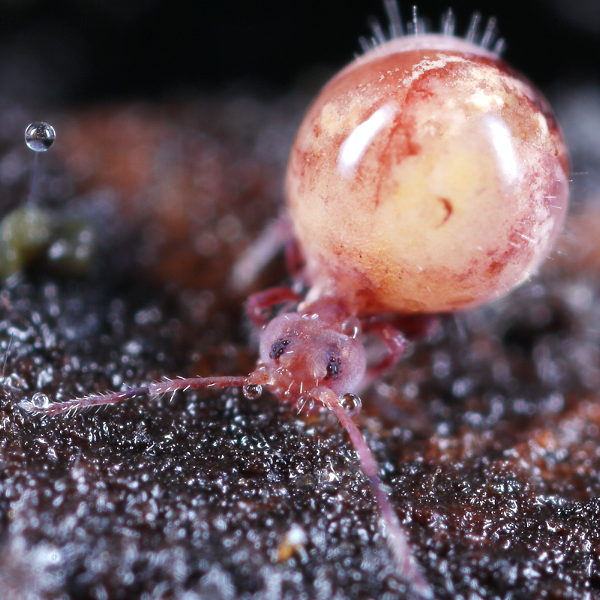
Dicyrtoma fusca dead 17-11-2014
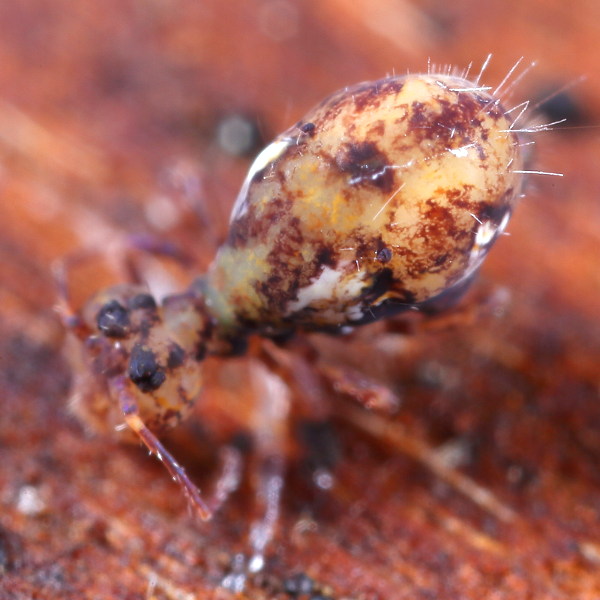
Dicyrtomina saundersi dead 18-02-2014
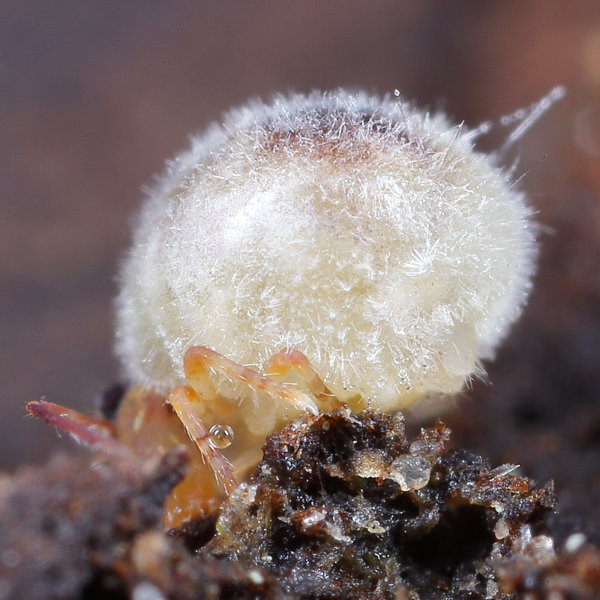
Dicyrtomina spec dead 07-11-2014
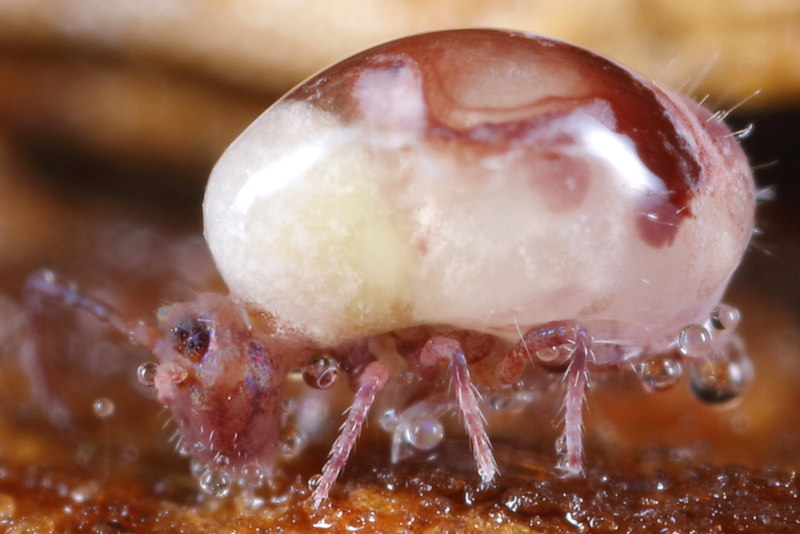
Dicyrtoma fusca dead 01-03-2017
In March 2018 I take a picture of a springtail on which another fungal infection can be seen, you see green stripes and a fused eye. This fungus belongs to the group of Laboulbeniales. These fungi live on arthropods and are mainly known to attack beetles. It is particularly common in ladybugs. A mycelium is missing in this group, there is one cell that is sutured into the skin of the host and above are a small number of cells that form the fruiting body and spores. There are already 2000 species described while the first descriptions date from 1853. The fruiting bodies are extremely small and therefore difficult to determine. It turns out that the fungus is very specific as far as the host is concerned.

Jordanathrix sp. 4 (nr superba) with Laboulbeniales infection
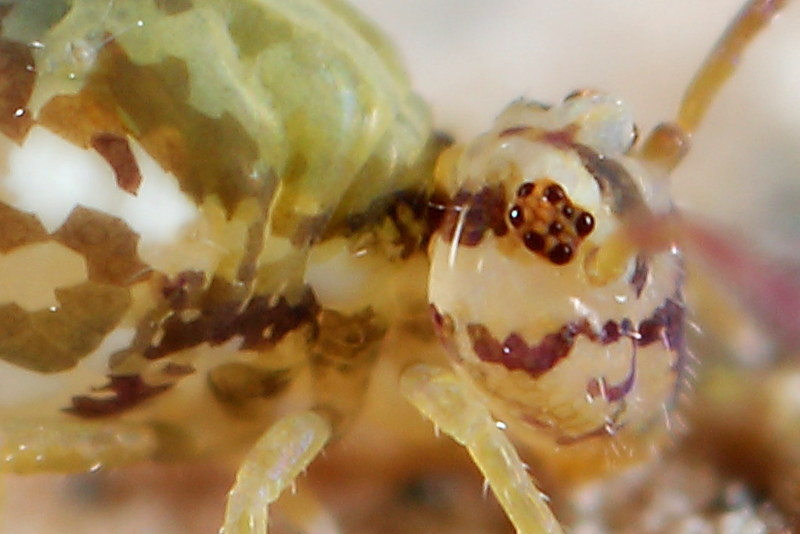
Jordanathrix sp. 4 (nr superba) normal animal
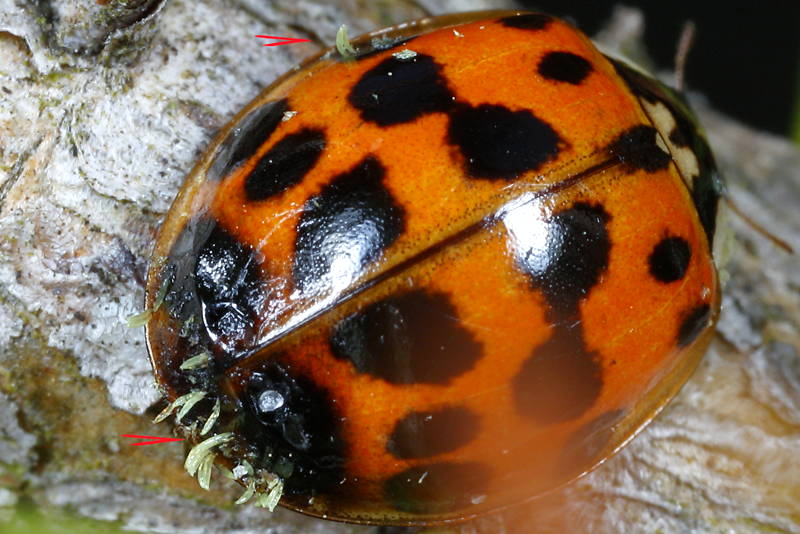
ladybug with Laboulbeniales infection
You can also try to get a name at your photos of springtails with the photo key, click on the picture below.

Thanks
For the determination by means of Flickr thanks to Frans Janssens
For the determination by means of forum.waarneming.nl thanks to Matty Berg